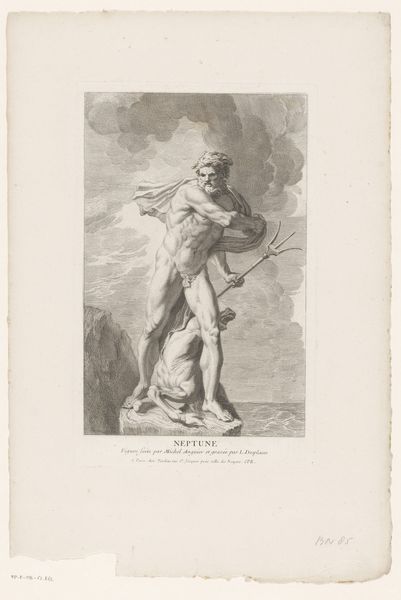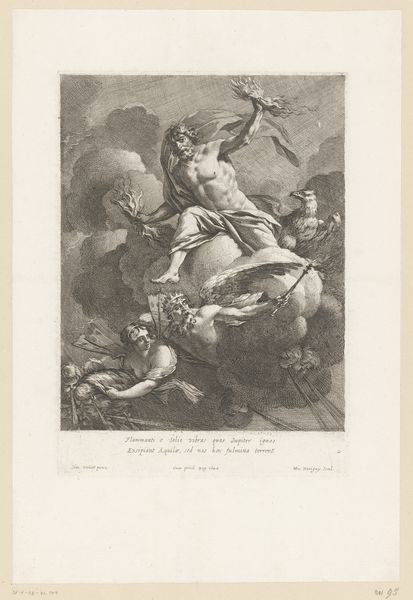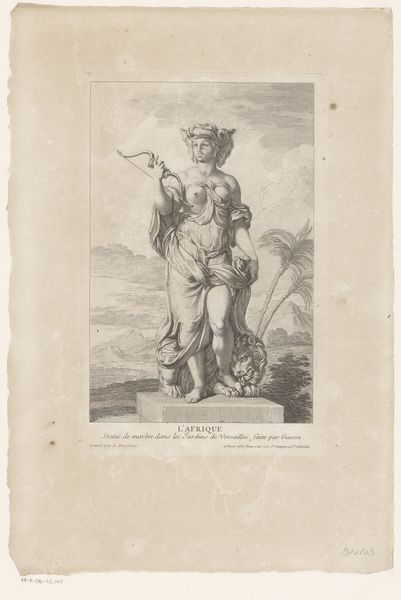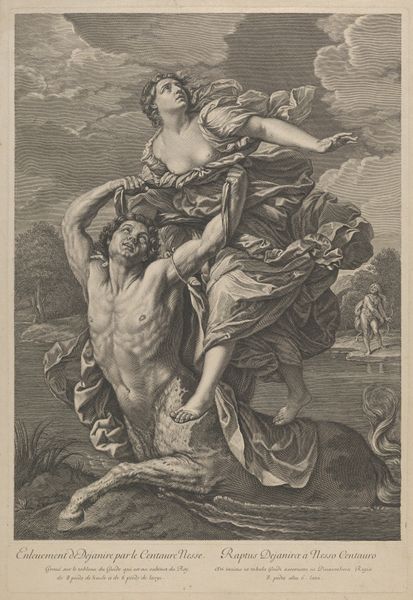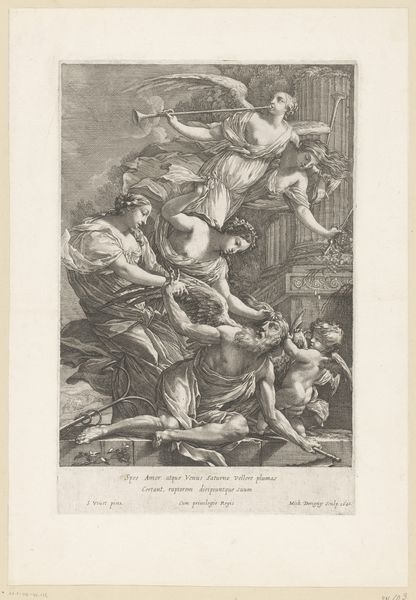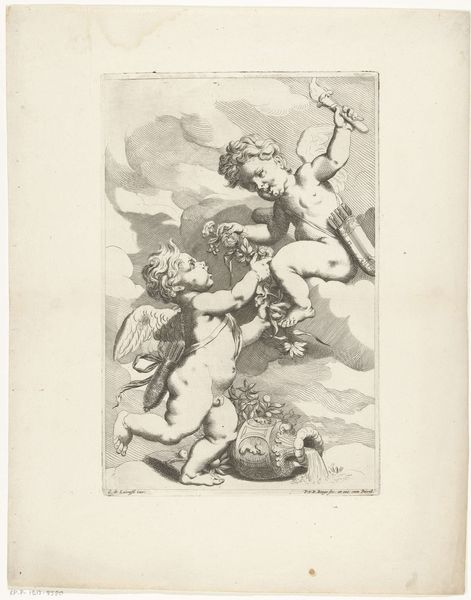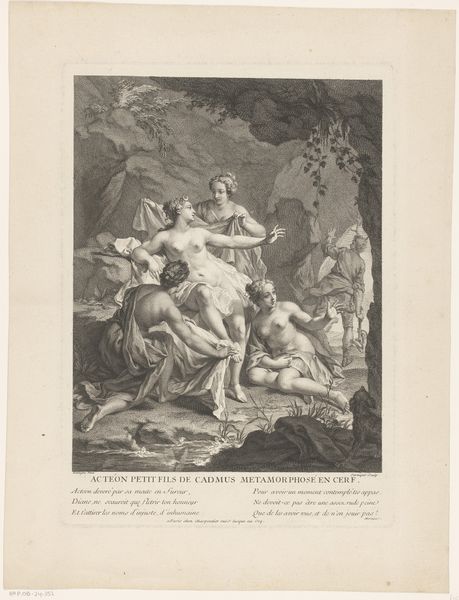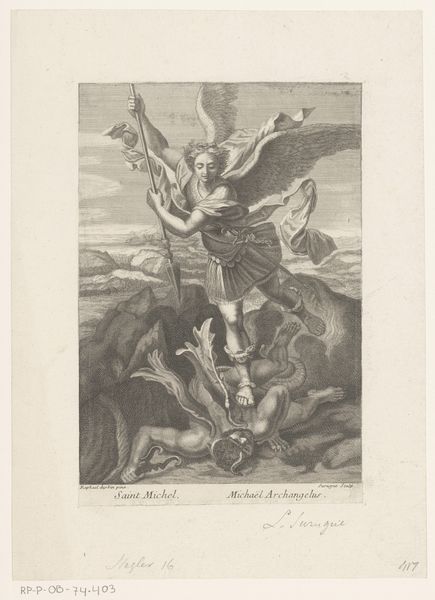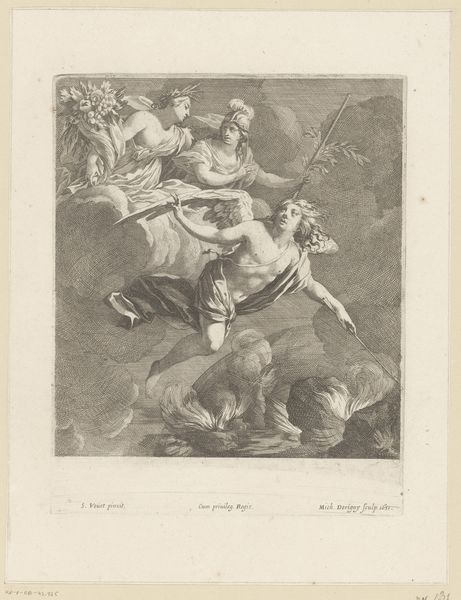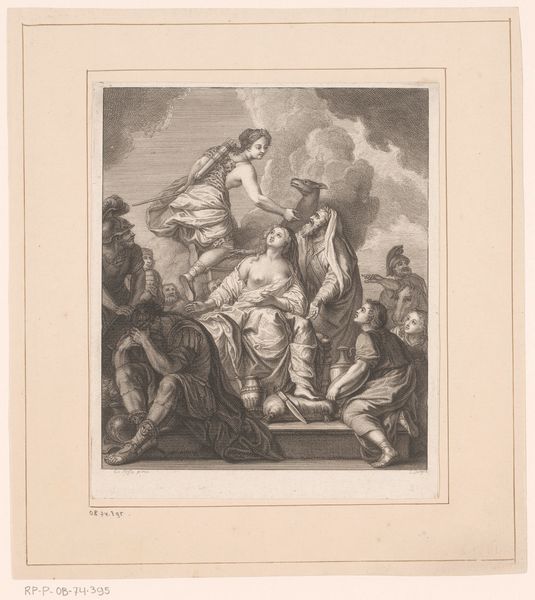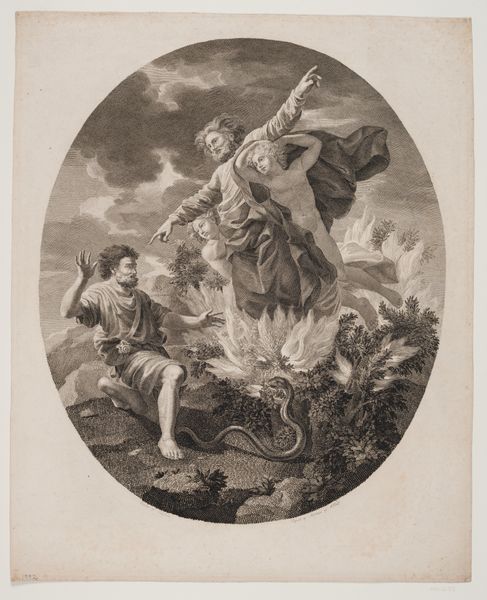
engraving
#
portrait
#
baroque
#
old engraving style
#
figuration
#
line
#
history-painting
#
nude
#
engraving
Dimensions: height 325 mm, width 202 mm
Copyright: Rijks Museum: Open Domain
Curator: We're looking at Louis Desplaces' engraving, "The Abduction of Helen by Paris," created sometime between 1692 and 1739. What are your initial thoughts? Editor: Immediately, I notice the tension in the scene, rendered in a classical, almost academic style. The upward sweep of Helen's arm, the dynamic pose... it’s all very dramatic. Curator: It's fascinating how Desplaces, through the engraving process, transforms a likely multi-dimensional sculpture into something entirely linear, playing with light and shadow through hatching techniques. The work involved to produce so fine and subtle tonal variations! The production would likely require significant resources. Editor: Absolutely. And if we consider the iconography, the narrative of Paris seizing Helen isn’t just a story. It symbolizes desire, conflict, and ultimately, the seeds of the Trojan War. Her raised arm--is that resistance, supplication, or perhaps a premonition of the tragedies to come? Curator: Interesting. It highlights how this event became a pivotal moment exploited within popular culture and for socio-economic manipulation and ideological consolidation in baroque art. This engraving would provide an opportunity to replicate the primary sculpture as an ideological message for a broad market of consumers. Editor: Indeed. The image also works on a psychological level. Paris embodies masculine aggression, while Helen represents idealized beauty—an objectified prize that has caused destruction across the ancient world. She has continued to inspire the Western idea of beauty and feminine mystique for generations since. Curator: And consider the means of circulation! As a printed engraving, this scene, originally conceived as monumental sculpture and reproduced with reproductive printing technology, could become a commonplace visual accessible to various social classes who wanted to consume visual imagery based on mythology. It blurs boundaries between ‘high art’ and more commercial enterprise. Editor: So we are looking at a powerful image in circulation--both commercially and symbolically--with enduring impacts to how gender, war, and desire have been understood for centuries. Curator: Precisely. Its enduring power also reveals a complex, often fraught dialogue about beauty, power, and artistic value that continues to shape our world even today. Editor: A powerful testament to how images, materials, and cultural narratives are deeply intertwined.
Comments
No comments
Be the first to comment and join the conversation on the ultimate creative platform.
